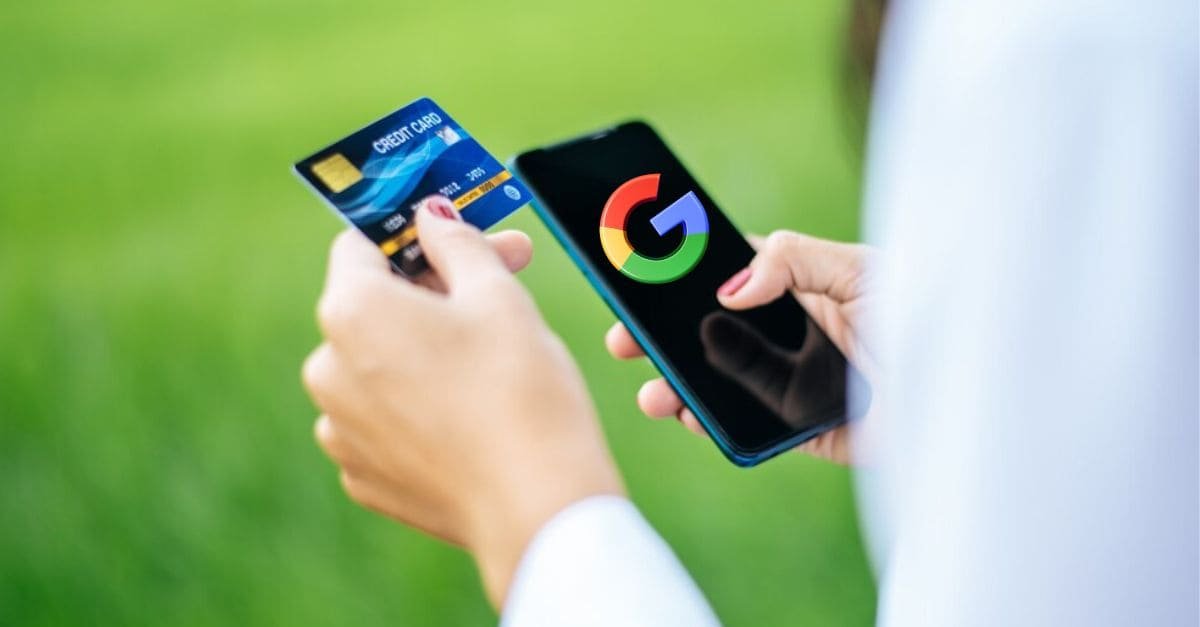
Are you one of the millions of businesses relying on Google services to control your actions? While these services offer tremendous value, they can sometimes come with unexpected financial surprises. Dealing with incidental Google service charges is a challenge many business owners face. But don’t worry.
This article will guide you through keeping your finances in check and effectively dealing with unknown Google service charges. Understanding “Why is Google Services Charging my Credit Card” is important if you have a credit card. We will provide you with valued insights to ensure you stay on top of your expenses.
Whether it’s an unexpected ad spent on Google Ads or additional charges for storage on Google Drive, we will prepare you with the knowledge and strategies to manage these costs effectively. By applying the tips and advice shared in this article, you can gain better control over your finances and avoid any unwanted surprises in the future.
Don’t let unexpected Google service charges disrupt your financial plans. Read on to learn how to keep your finances in check and easily steer these charges.
Table of Contents
Understanding Google services charges
To successfully deal with unexpected charges, it’s essential to understand how Google services charges work. Google offers an extensive range of services, including Google Ads, Google Drive, and Google Cloud, each with its own pricing structure. Charges can apply for various reasons, such as exceeding usage limits, running ads without proper optimization, or subscribing to premium features.
It’s important to explain yourself with the specific terms and conditions of your services. Take the time to understand the billing cycles, payment methods, and any probable fees that may apply. This knowledge will give you enough power to make up-to-date decisions and evade unnecessary charges.
Reasons for unexpected Google services charges
There are several reasons why unexpected Google service charges may occur. Possible reasons for Google service charges are:
- Subscription fees
Many of Google’s services, such as YouTube Premium, Google Drive storage, and Play Music, offer subscription-based plans requiring recurring payments. You may see charges on your credit card statement if you have subscribed to any of these services or made in-app purchases through a Google account.
- In-app purchases
Google Play Store is home to millions of apps that offer various services and features. Some apps require in-app purchases for additional features or to remove ads. If you have made any in-app purchases using your credit card, the charge will appear as a Google service charge on your credit card statement.
- Advertisements
Google’s advertising platform, Google Ads, is used by businesses to advertise their products or services. If you have clicked on an ad while using a Google service such as YouTube or Gmail, you may see a charge on your credit card from Google Ads.
- Unauthorized access
In some cases, unauthorized access to your Google account can result in charges you did not make. Hackers may gain access to your account and use it for fraudulent activities, resulting in charges on your credit card. It is essential to regularly check your account activity and report any suspicious charges immediately.
How to prevent unexpected Google service charges
Prevention is always better than cure when it comes to unexpected charges. Here are some proactive steps you can take to prevent incidental Google service charges:
- Monitor your usage: Keep a close eye on your usage of Google services. Set up alerts or notifications to receive updates on your usage levels. By monitoring your usage regularly, you can identify any potential issues before they escalate.
- Optimize your ad campaigns: Ensure your Google Ads campaigns are optimized for maximum efficiency. Conduct thorough keyword research, refine your targeting, and regularly review and tweak your ads to improve their performance. This will help you avoid wasting ad spending on ineffective campaigns.
- Please review and adjust subscriptions: Regularly review your subscriptions to Google services and assess whether they align with your current needs. Cancel any unnecessary subscriptions or downgrade to lower-tier plans if they no longer serve your business objectives.
- Set spending limits: If you use Google Ads, consider setting daily or monthly spending limits to control your ad spend. This can help prevent unexpected charges by capping your expenses within a predetermined budget.
- Educate your team: If multiple employees use Google services, ensure they know the potential costs and how to use them efficiently. Provide training and guidelines to ensure everyone understands their responsibilities when managing expenses.
Implementing these preventive measures can significantly reduce the likelihood of unexpected Google service charges and maintain better control over your finances.
Tips for managing unexpected Google service charges
Even with preventive measures in place, incidental charges may still occur. Here are some tips for effectively managing incidental Google service charges:
- Review your billing statements: Regularly review your billing statements to identify any unexpected charges. Check for any discrepancies or unfamiliar charges and investigate them promptly. It’s important to catch and address any issues early to prevent further financial impact.
- Contact Google support: If you encounter any unexpected charges you believe are incorrect or unjustified, contact Google support for assistance. They can provide clarification, investigate the charges, and guide you through the resolution process.
- Negotiate with Google: In some cases, especially if you are a long-term customer or have a strong relationship with Google, you may be able to negotiate the charges. Explain your situation, provide any relevant evidence, and present your case politely and professionally. Google may be willing to waive or reduce the charges as a goodwill gesture.
- Adjust your usage: If you consistently encounter unexpected charges for a particular service, consider adjusting your usage to fit within the allocated limits. This may involve optimizing your workflows, cleaning up unnecessary files, or exploring alternative solutions that offer more cost-effective options.
- Seek expert advice: If you struggle to manage unexpected charges or need guidance on maximizing the value of Google services charging credit cards while minimizing costs, consider seeking advice from a digital marketing consultant or financial expert. They can provide custom-made plans and awareness based on your exact business needs.
By following these tips, you can effectively manage unexpected Google service charges and minimize their impact on your finances.
How to dispute and resolve unexpected Google service charges
If you encounter incidental charges that you believe are incorrect or unjustified, discussing and fixing them promptly is crucial.
- Gather evidence: Collect any relevant documentation, billing statements, or screenshots that support your claim. This evidence will strengthen your case when disputing the charges.
- Contact Google support: Reach out to Google support through their online chat, email, or phone. Explain the situation, provide the evidence you have gathered, and request a review of the charges. Be clear, polite, and concise in your statement.
- Escalate if necessary: If the initial response from Google support does not resolve the issue to your satisfaction, consider escalating the matter to a higher level of support or requesting a supervisor review. Persistence and clear communication are essential in these situations.
- Dispute with your payment provider: If the charges were made through a credit card or other payment provider, you may also have the option to dispute them directly. Contact your payment provider and provide them with the necessary information to initiate the dispute.
- Seek legal advice if needed: In rare cases where the dispute cannot be resolved through regular channels, you may need legal advice. Consult an attorney specializing in digital services or contract law to understand your options and potential remedies.
Remember to act promptly when disputing unexpected charges to ensure a timely resolution. Keep records of all communication and maintain a professional demeanour throughout the process.
Budgeting and planning for Google services charges
To avoid any surprises in the future, it’s essential to incorporate Google services charges into your budgeting and planning process. Here are some tips to help you effectively budget and plan for these expenses:
- Assess historical usage: Review your past usage patterns and charges to identify recurring trends or areas where costs can be optimized. This analysis will provide insights into potential areas for cost savings and help you set realistic budgetary expectations.
- Allocate a dedicated budget: Set aside a specific budget for Google services charges in your overall financial plan. This ensures that designated funds are available to cover these expenses without impacting other areas of your business.
- Regularly review and update your budget: Your Google services usage and associated costs may change as your business evolves. It’s essential to periodically review and update your budget to reflect any adjustments in usage, pricing, or new services you may be utilizing.
- Growth plan: If your business is expanding or expecting increased usage of Google services, account for this growth in your budget. Anticipate additional charges and allocate resources accordingly to avoid any financial strain.
By incorporating Google services charges into your budgeting and planning process, you can proactively manage these expenses and ensure they align with your overall financial goals.
Bonus: Can you pay your payroll with a credit card?
Tools and resources to help track and manage Google service charges
Managing Google services charges becomes more accessible with the help of various tools and resources available. Here are some recommended tools and resources to assist you in tracking and managing these charges:
- Google Ads Manager: Utilize the Google Ads Manager to monitor your ad campaigns, track spending, and analyze performance metrics. This tool provides valuable insights into your ad spend and helps you optimize your campaigns for better results.
- Google Cloud Console: If you use Google Cloud services, the Google Cloud Console allows you to monitor your resource usage, track costs, and optimize your infrastructure. It provides detailed reports and analytics to help you stay on top of your expenses.
- Google Workspace Admin Console: For businesses using Google Workspace, the Admin Console offers extensive control and visibility into user accounts, storage usage, and billing details. It enables you to manage your subscriptions, allocate storage, and monitor costs effectively.
- Third-party expense management software: Consider using third-party expense management software that integrates with Google services. These tools can automate expense tracking, provide detailed reports, and help you gain better visibility into your overall spending.
Use these tools and resources to streamline your financial management processes and gain better control over your Google services charges.
How do I Stop Google from Charging My Credit Card?
To remove a credit card, debit card, or other payment method from your Google Play account:
- Open the Google Play app.
- Tap on the profile icon at the screen’s top right corner.
- From the drop-down menu, select “Payments & subscriptions.”
- Next, tap on “Payment methods.”
- Select “More payment settings.”
- If prompted, sign in to your Google Pay account.
- Locate the payment method you wish to remove and tap “Remove.”
- Confirm the removal by tapping “Yes” on the pop-up window.
- The selected payment method will now be removed from your Google Play account.
Things to keep in mind while removing a payment method:
- You can only remove a payment method if it is not currently used for subscriptions or pending transactions.
- If you have an active subscription that uses the payment method you want to remove, you will need to change the payment method before removing it from your account.
- Removing a payment method will not affect your previous transaction history with that method. You can still view past transactions made using that payment method.
- If you have any remaining balance on a Google Play gift card or promotional credit, it cannot be transferred or refunded. Make sure to use up all the balance before removing the associated payment method.
- Once a payment method is removed, you can add it later. However, removing a credit or debit card requires re-entering all the details when adding it back.
- It is recommended to regularly review and update your payment methods on Google Play to ensure that they are up-to-date and accurate.
Why should you remove a payment method from your Google Play account?
- You no longer use the selected payment method and want to declutter your account.
- Your credit/debit card or bank account associated with the payment method has been compromised, and you want to ensure the security of your account.
- You have switched to a new payment method you want to use for future purchases on Google Play.
- You have exceeded the transaction limit set by your bank for the selected payment method, and it keeps getting declined for purchases on Google Play.
- You have changed your mind about sharing your payment details on Google Play and want to remove them from the platform.
Overall, regularly reviewing and managing your payment methods can help you keep track of your expenses and ensure secure and hassle-free transactions on Google Play. So, if you no longer use a particular payment.
Case studies and examples of dealing with unexpected Google service charges
To provide you with practical insights, let’s explore a few case studies and examples of how businesses have dealt with incidental Google service charges:
- Case Study 1: Optimizing Google Ads Campaigns
A small e-commerce business noticed an unexpected increase in their Google Ads spending. Upon investigation, they discovered that their campaigns were not correctly optimized, resulting in wasted ad spend. They revamped their keyword strategy, improved ad targeting, and monitored their campaigns closely. As a result, they reduced their ad spend by 30% while maintaining the same level of conversions.
- Case Study 2: Negotiating with Google
A startup company faced unexpected charges for additional storage on Google Drive due to exceeding its allocated quota. They contacted Google support, explained their situation, and provided evidence of their limited financial resources. After multiple discussions, Google agreed to waive the additional charges as a one-time exception, helping the startup avoid financial strain.
- Case Study 3: Implementing Expense Management Software
A medium-sized marketing agency struggled to keep track of its Google services charges across various client accounts. They integrated expense management software with Google services, providing real-time expense tracking and reporting. This allowed them to efficiently manage their clients’ budgets, identify unexpected charges, and optimize overall spending.
These case studies highlight the importance of proactive management, optimization, effective communication, and leveraging tools to deal with unexpected Google service charges.
Conclusion
In conclusion, it is essential to understand why Google Services charges credit cards. While there may be various reasons for this, the most common ones include subscription renewals, app purchases, and in-app purchases. Keeping track of your subscriptions and purchases is crucial to avoid unexpected charges on your credit card.
Additionally, if you notice any unauthorized charges from Google Services, it is essential to contact their customer support immediately. They will be able to assist you in identifying the reason for the charge and resolving any issues.
It is also recommended to regularly review your payment methods on Google Services and remove any outdated or unnecessary ones. This will help prevent any accidental charges in the future.
FAQs: Why is Google Services Charging my Credit Card
Why am I seeing charges from Google on my credit card statement?
It is possible that these charges are for services or products you have purchased using your Google account. These could include subscription fees, in-app purchases, or one-time purchases.
I don't remember making any purchases using my Google account. What should I do?
It is possible that someone else has access to your account and made these purchases without your consent. We recommend checking your purchase history in the Google Play Store or contacting our support team for further assistance.
Can I receive a refund for these charges?
Refunds are available for eligible purchases made through Google. You can request a refund by following the steps outlined in our support documentation or by contacting our support team.
How do I prevent unauthorized charges on my credit card from Google?
To prevent unauthorized charges, we recommend regularly monitoring your purchase history and enabling two-factor authentication on your Google account. It is also important to keep your account login information secure and to regularly change your password.
Are there any additional fees or charges from Google?
In most cases, the charges you see on your credit card statement are for services or products purchased through your Google account. However, there may be additional taxes or fees applied depending on your location and the type of purchase made.






